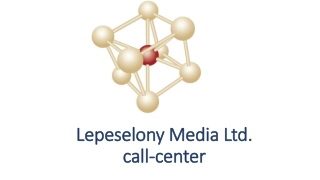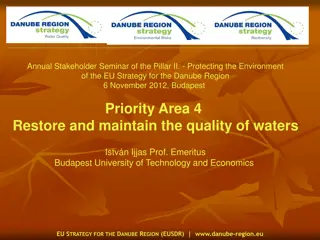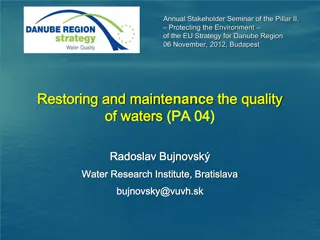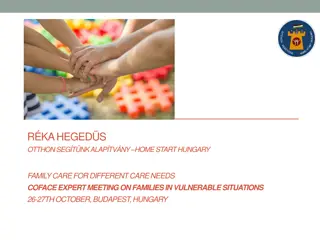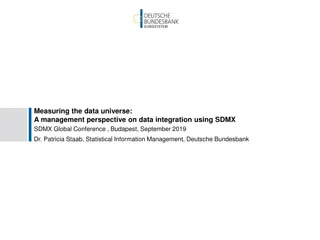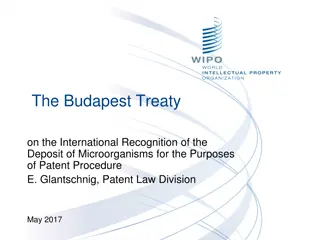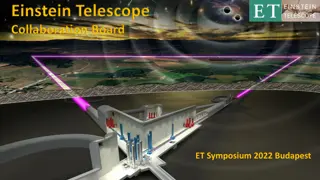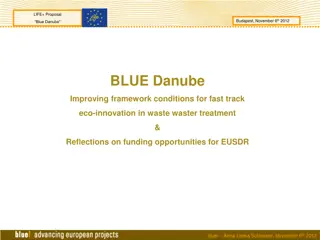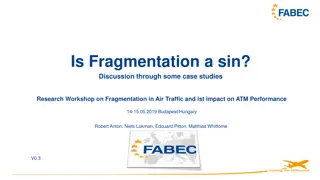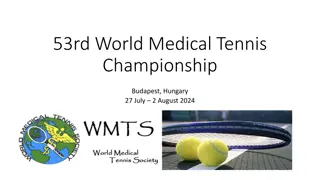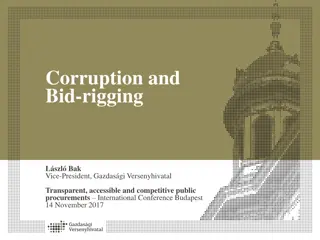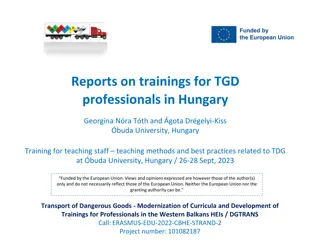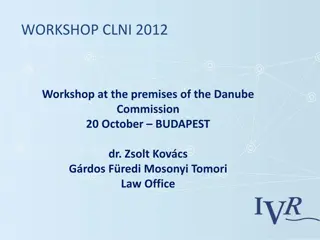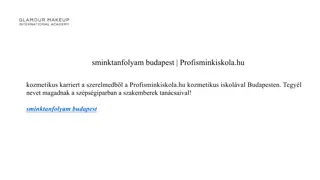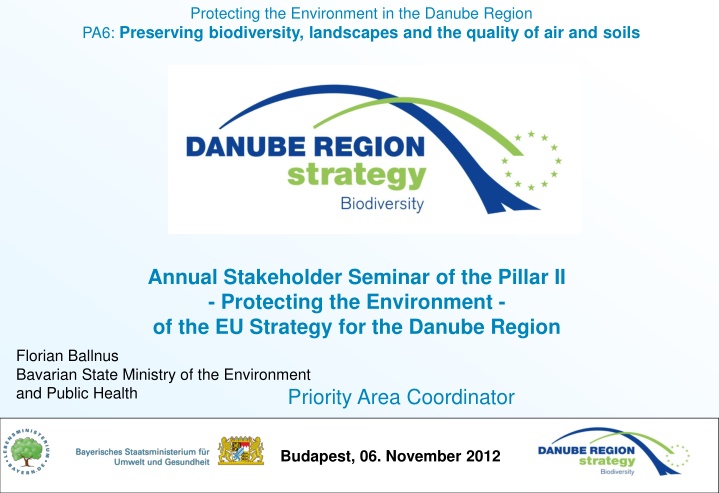
Preserving Biodiversity and Landscapes in the Danube Region
The EU Strategy for the Danube Region focuses on protecting the environment in Priority Area 6 (PA6), emphasizing biodiversity, landscapes, air, and soil quality. Stakeholders collaborate to implement PA6, highlighting the importance of the Danube as a habitat for diverse species. The approach involves capacity building, networking, and project development to enhance biodiversity conservation and nature protection. PA6 aims to amplify voices advocating for biodiversity preservation within the EUSDR framework.
Download Presentation

Please find below an Image/Link to download the presentation.
The content on the website is provided AS IS for your information and personal use only. It may not be sold, licensed, or shared on other websites without obtaining consent from the author. If you encounter any issues during the download, it is possible that the publisher has removed the file from their server.
You are allowed to download the files provided on this website for personal or commercial use, subject to the condition that they are used lawfully. All files are the property of their respective owners.
The content on the website is provided AS IS for your information and personal use only. It may not be sold, licensed, or shared on other websites without obtaining consent from the author.
E N D
Presentation Transcript
Protecting the Environment in the Danube Region PA6: Preserving biodiversity, landscapes and the quality of air and soils Annual Stakeholder Seminar of the Pillar II - Protecting the Environment - of the EU Strategy for the Danube Region Florian Ballnus Bavarian State Ministry of the Environment and Public Health Priority Area Coordinator Budapest, 06. November 2012
Implementing PA6 Expectations and Experiences
The Danube Important habitat for Europe As the only European river, the Danube flows from west to east. It connects Western Europe with the Black Sea and crosses a variety of different habitats. The Danube valley touches many natural areas and is therefore a connecting corridor between the different landscapes. Danube has great significance for animal migrations, particularly for migratory fish. Migratory birds use the Danube River as a major axis on the way south or north. A variety of areas along the Danube are suitable for resting, culmination in Danube Delta. The corridor function results in a large diversity of species and habitats along the Danube River. How can the EUSDR PA 6 - contribute significantly to maintain and enhance the status of the Danube, its tributaries and the entire region as an area with rich biodiversity assets?
Implementing the EUSDR the PA6 approach The start (February 2011 June 2011): Political start, high-level conferences, beginning of Pillar II cooperation Capacity building, organisational setting, organigram, internal networking Establishing first contacts to actors on various levels First Steering Group meeting in June 2011 The progress (July 2011 June 2012): Official start of the EUSDR Balancing between high expectations and actual possibilities ( Three no s ) Strenghtening the network and gathering project ideas (in preperation and ongoing) Development of further working documents, establishing the labelling system within Pillar II Participation at project events, bilateral meetings with stakeholder, information activities 2nd and 3rd Steering Group meeting, 1streport to EU COM Enhancing integrative approach within EUSDR
Implementing the EUSDR the PA6 approach The current situation July 2012 - now Lessons learned in dialogue with stakeholders: level of international/transnational cooperation and the setting of existing networks in the field of biodiversity and nature protection is quite weak. Stakeholder involvement and their networking is seen as precondition for PA6 and EUSDR-related activities. PA6 s mission: Make the voices of biodiversity and nature protection heard by using EUSDR momentum! Make the voices of biodiversity and nature protection heard by developing and implementing realistic and convincing activities! Challenge: bridge the time gap until 2014 without project funding Preparing ready-to-go projects for next EU funding period 2014-2020 Capacity building, Networking and Content oriented implementation as main pillars to proceed. Information about opportunities and possibilities of PA6 and EUSDR to stakeholder and public.
Implementing the EUSDR the PA6 approach Integrative approach within EUSDR Cooperation in the Environmental Pillar II is developing very well. Biodiversity is strongly connected to other Priority Areas (e.g. Transport, Energy), cooperation must be enhanced here as well. PA6 starts cooperation with PA1 (Steering Group attendance, Joint Panel in Regensburg). EUSDR provides opportunity to create and develop horizontal thematic links among different branches ! Further Reflections Tendency of hot spots with high degree of activities and areas without EUSDR knowledge or interest. Danube Strategy tends to become a well known term. Media coverage generally positive. Complexity of Danube Strategy is not easy to communicate.
Implementing the EUSDR the PA6 approach Summary of the PA6 approach key characteristics Horizontal integration: cross-sectoral perspective Vertical integration: bottom-up (involving stakeholder and actors), connection to policy level, using EUSDR-momentum Demand-driven: facilitate, strengthen and foster emerging and existing activities Open and flexible processes, there is no one-fits-it-all approach. Networking of stakeholder, projects, other networks, , in entire Danube Region to join forces. Development of PA6 Stakeholder Network in Danube Region. Philosophy: Realistic and feasible activities Positive and self-confident activities Respect principles of sustainability and equal opportunities Enhancing visibility
Organisation Chart of PA6 Reflection (October 2012) Coordination Concepts top-down European Commission DG Regio High Level Group National Contact Points PA6 Steering Group Decision making body Advice & support Report Interact Danube Countries repres. Observers Technical Ass. EUSDR Priority Areas 1-11 Funding Opportunities EU programmes e.g. ETC, LIFE, FPR, ,Obj. 1 & 2, Foundations, others.. Impact Projects Implementation of Action Plan Exchange Priority Area Coordinator Bavaria & Croatia Pillar II Priority Area 4-6 Cooperation Feedback, Project ideas, demands Information & Service offered Working Groups Project Development PA6 Stakeholder Network NGO s, local authorities, networks (-> potential project holder) Thematic Working Groups Workshops, ad hoc meetings Public Participation bottom-up
Tasks of the Priority Area Coordinators What can the PAC do for you? Policy level Establish policy discussions and policy development on PA6-related issues Make policy level aware of specific projects and potential or open conflicts Monitor and report to the Commission on the progress Project Level Identify Project Leaders and assist them in order to facilitate the implementation of projects Seek for available funding opportunities and make full use of already existing sources of information Identify new project ideas and track on-going projects Coordination with other Priority Areas Ensure communication and visibility of results, promote public awareness Monitor and report to the Commission on the progress
Example on Project level Danubeparks 2.0 Georg Frank Donau-Auen National Park
Example on Project level Mura-Drava-Danube TBR
Contacts Thank you for your attention! Dr. Florian Ballnus Bavarian State Ministry of the Environment and Public Health Rosenkavalierplatz 2 81925 M nchen Germany Phone: +49 (0)89 9214-3144 florian.ballnus@stmug.bayern.de

